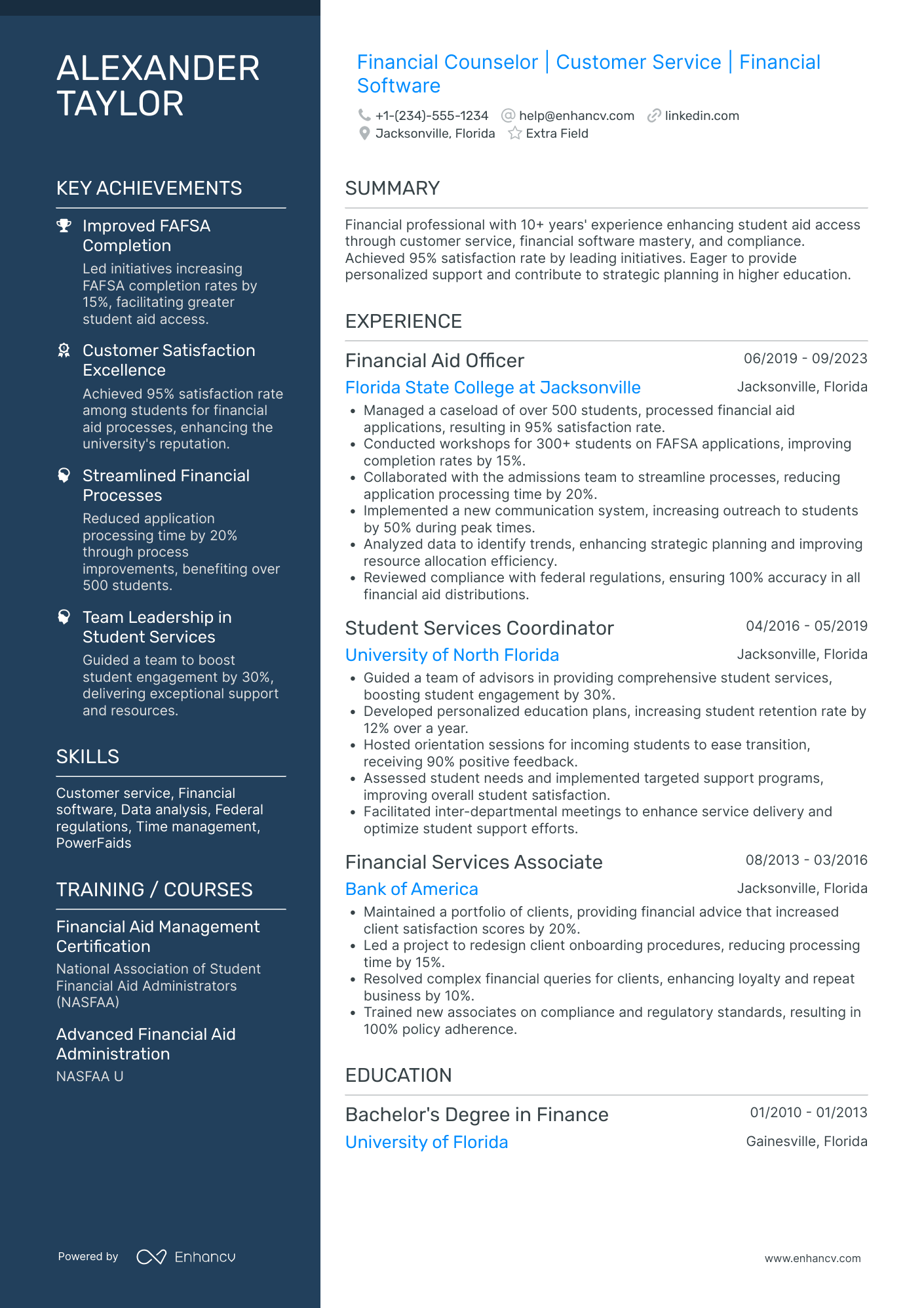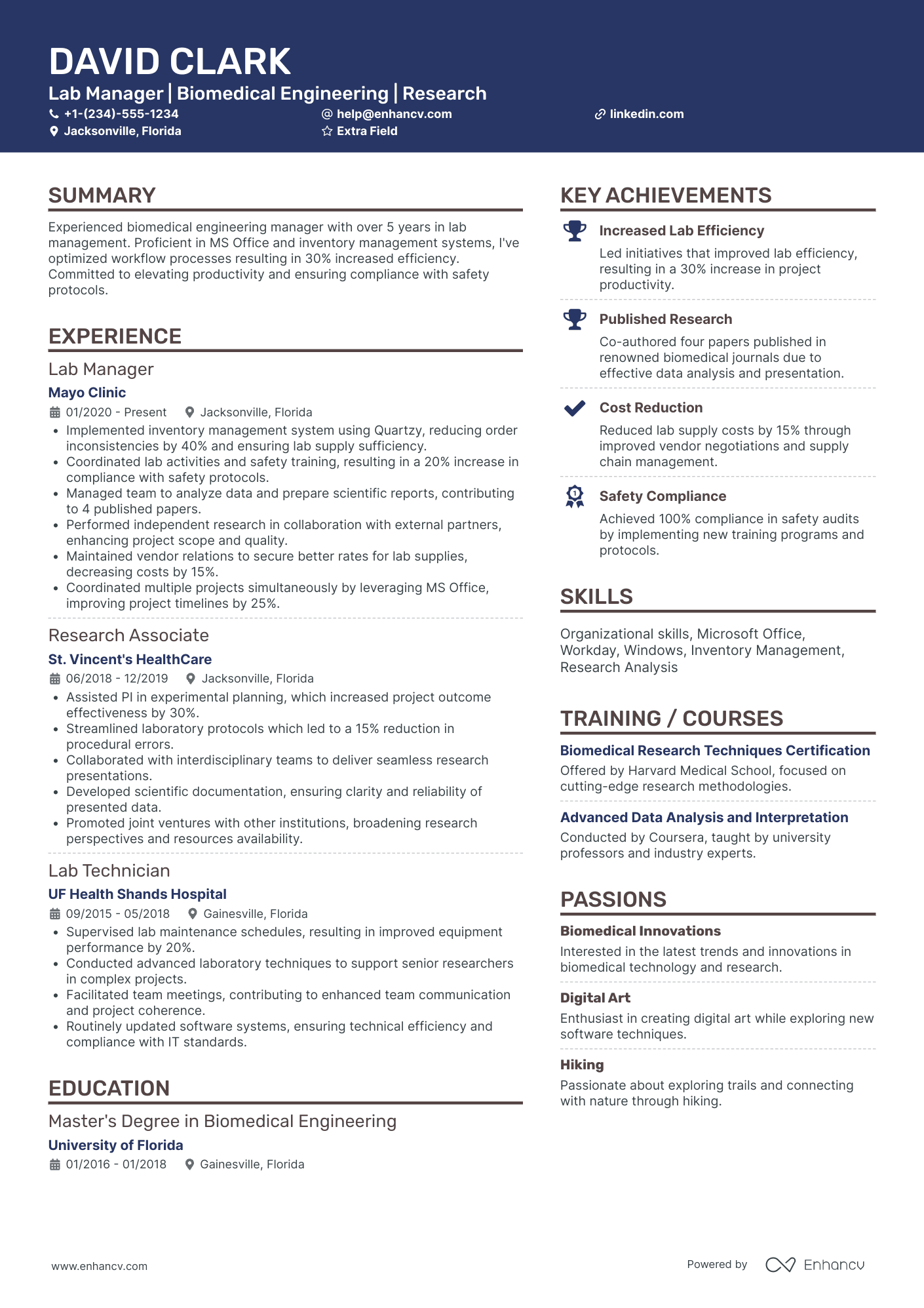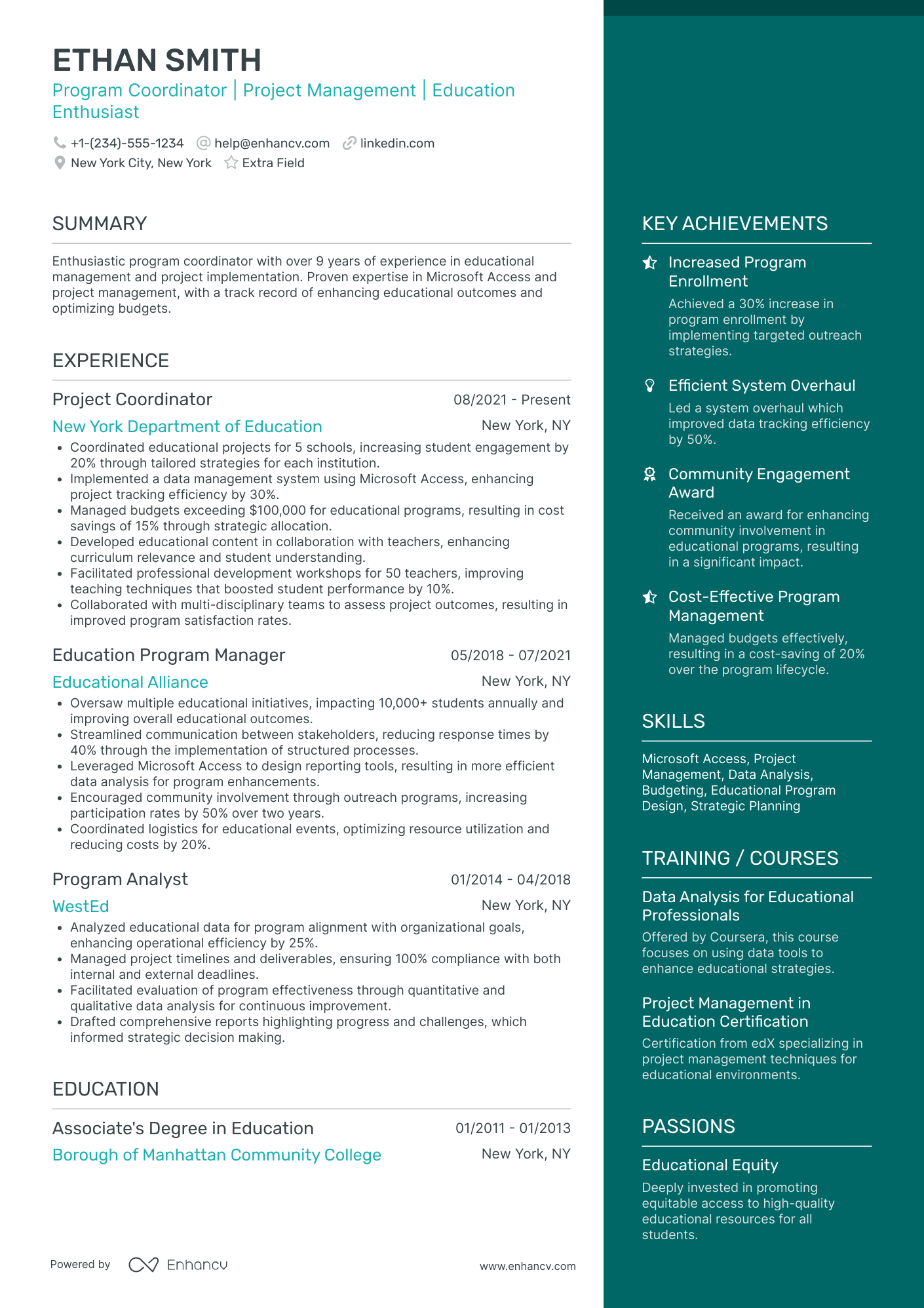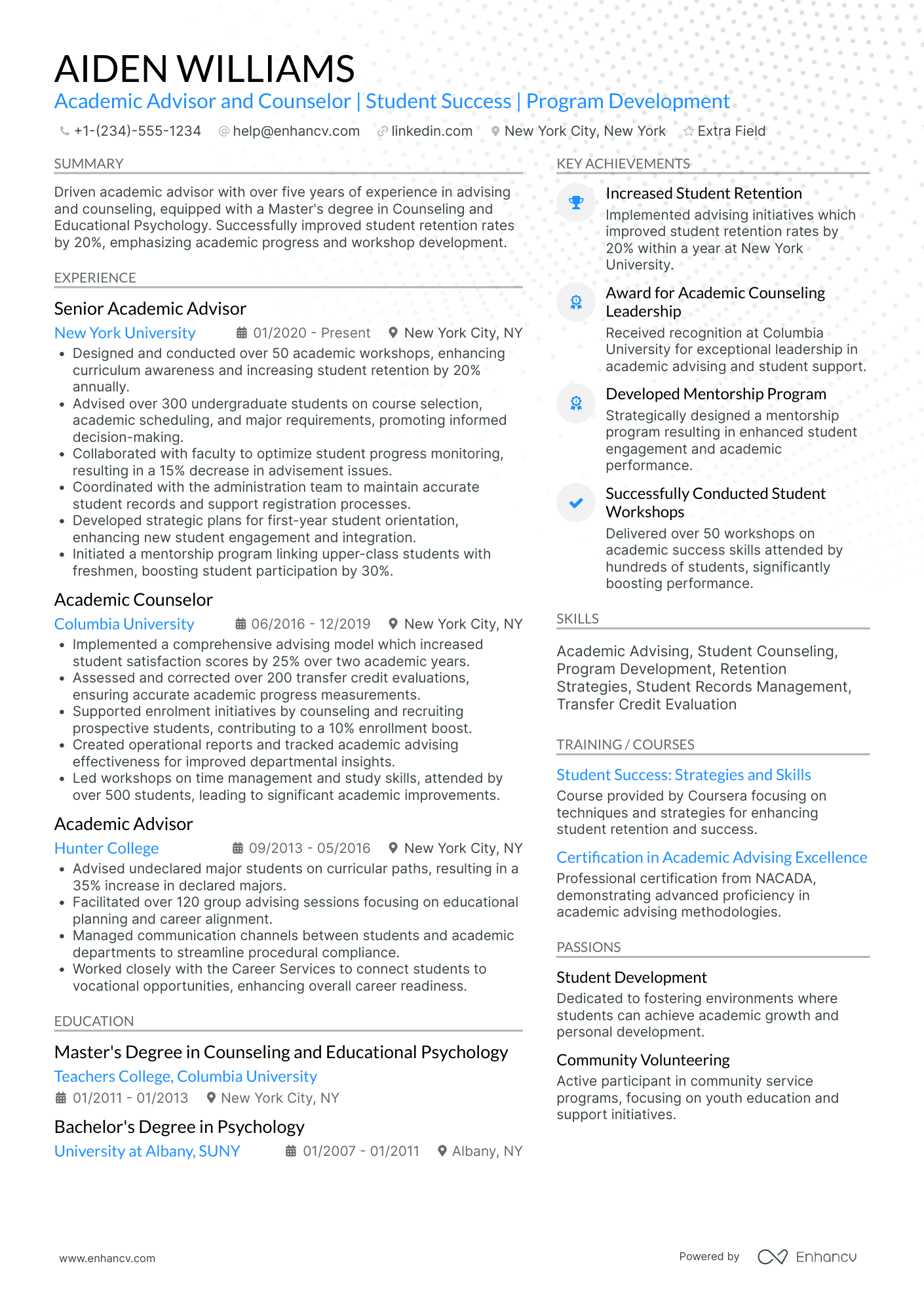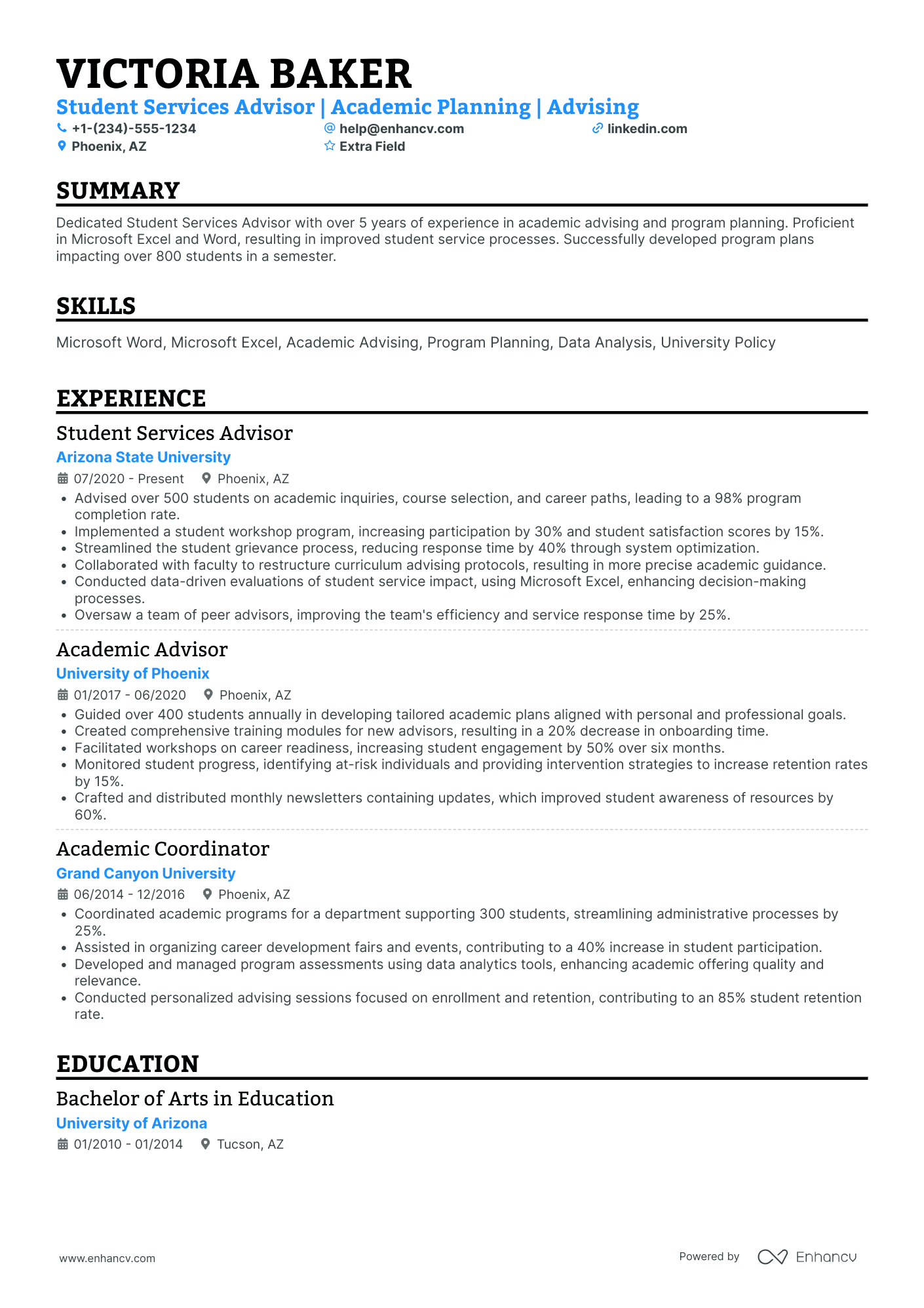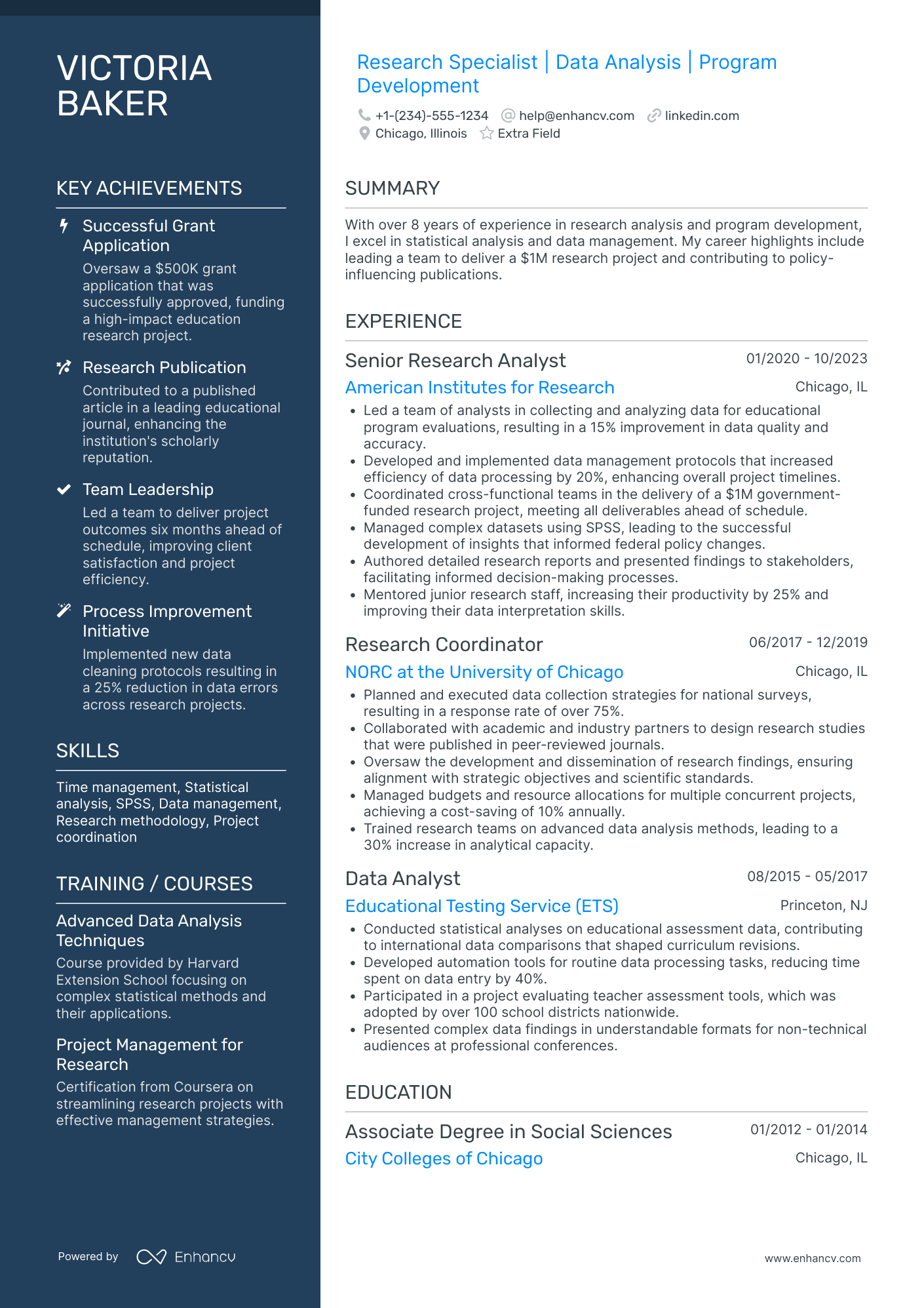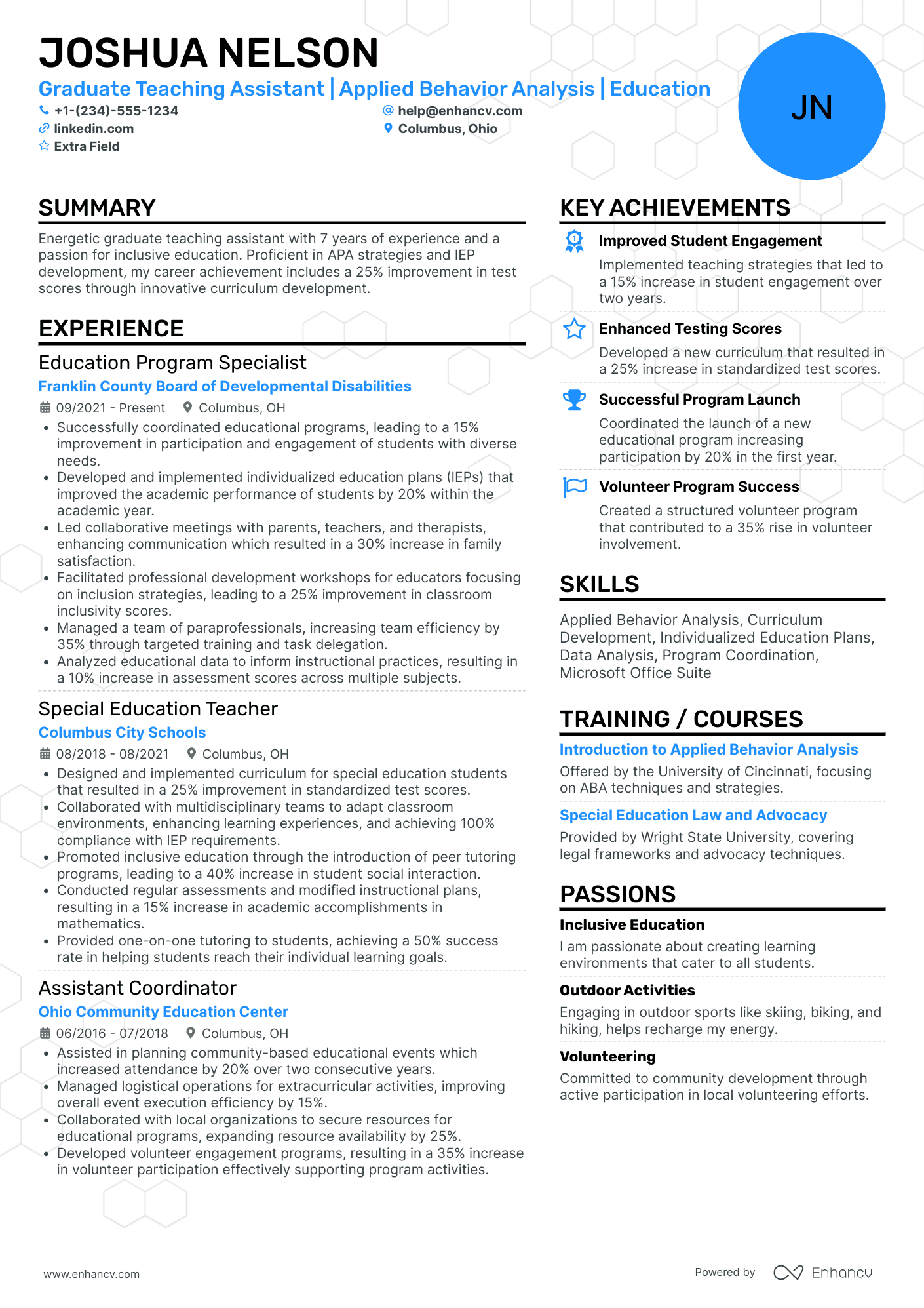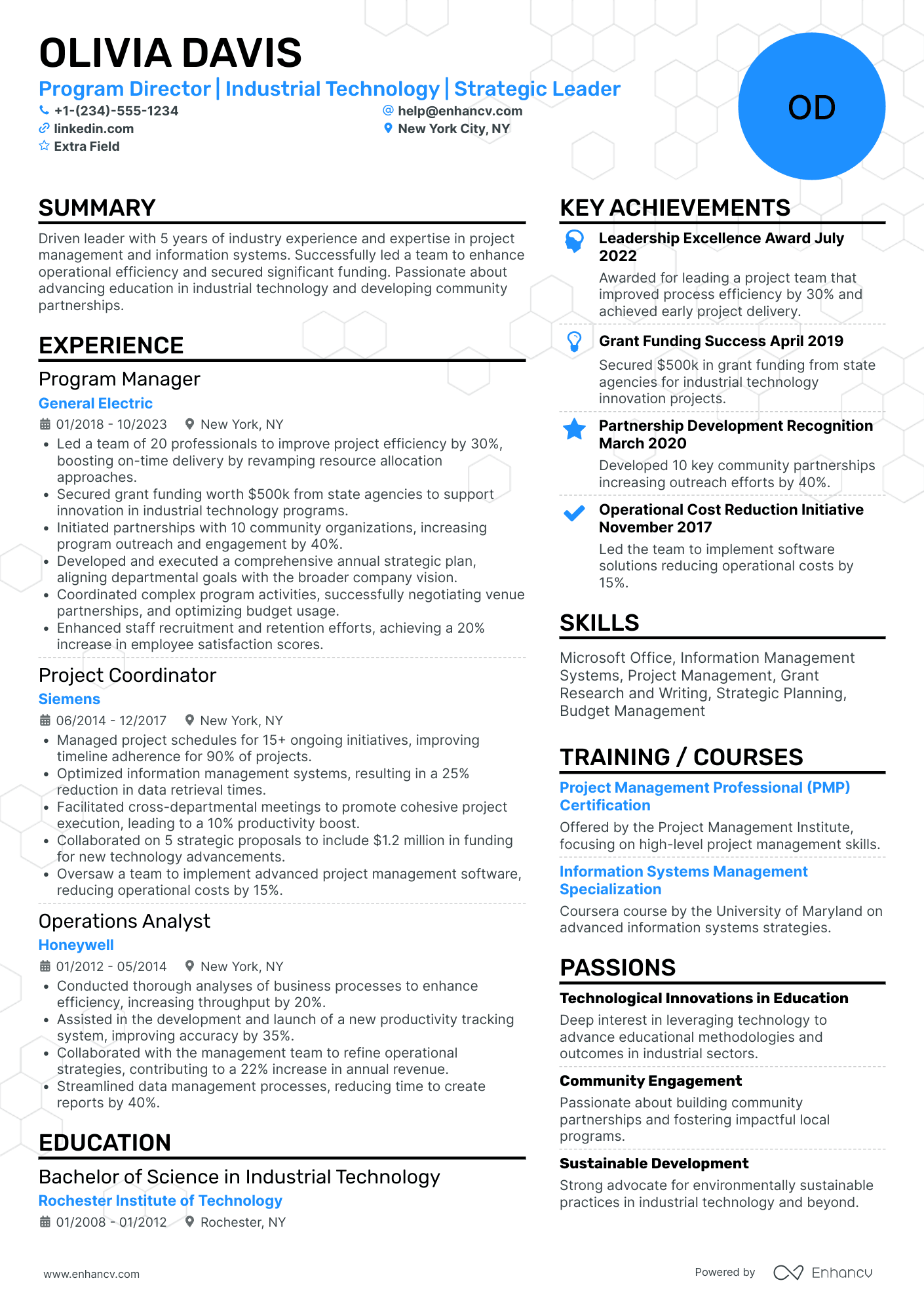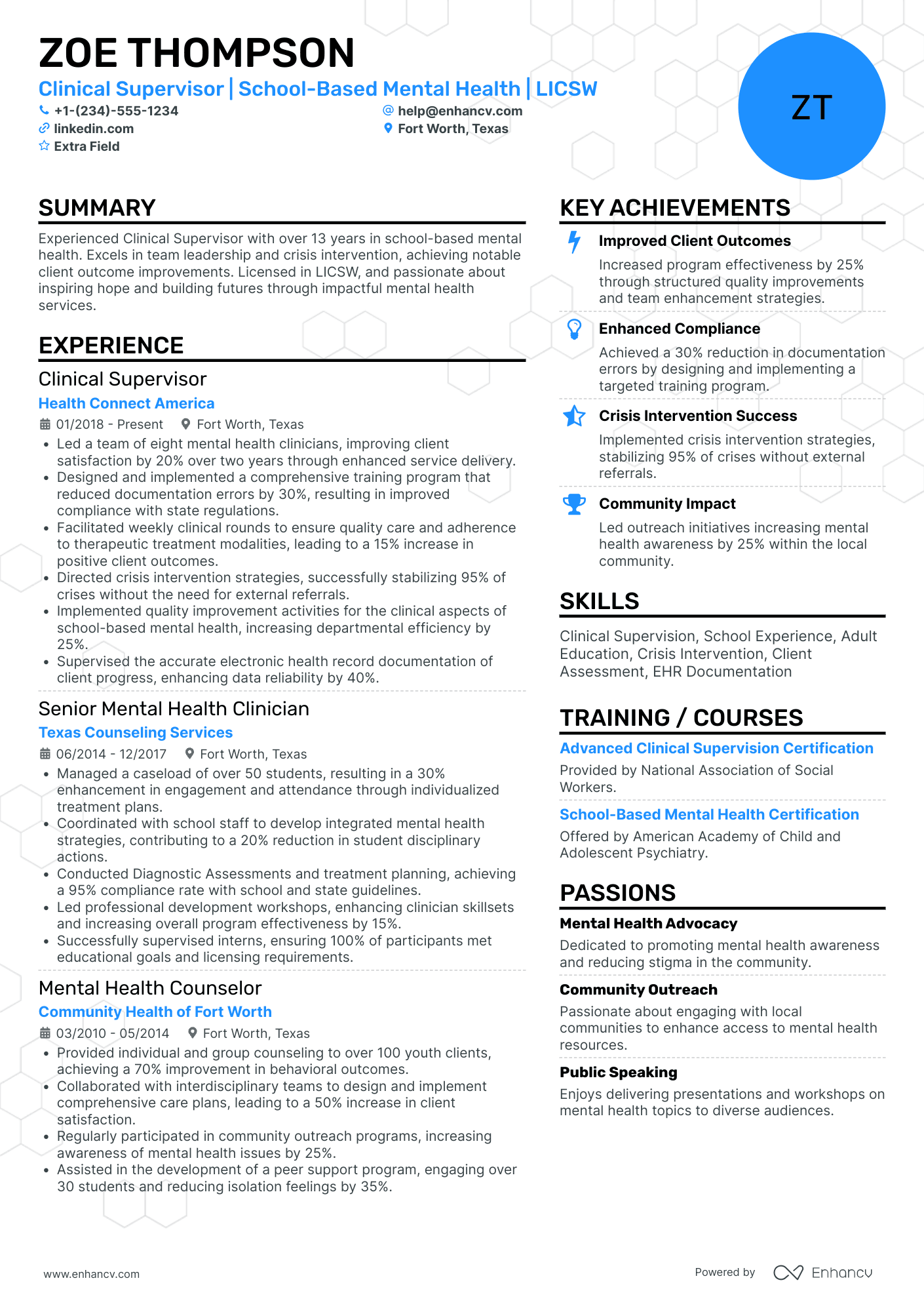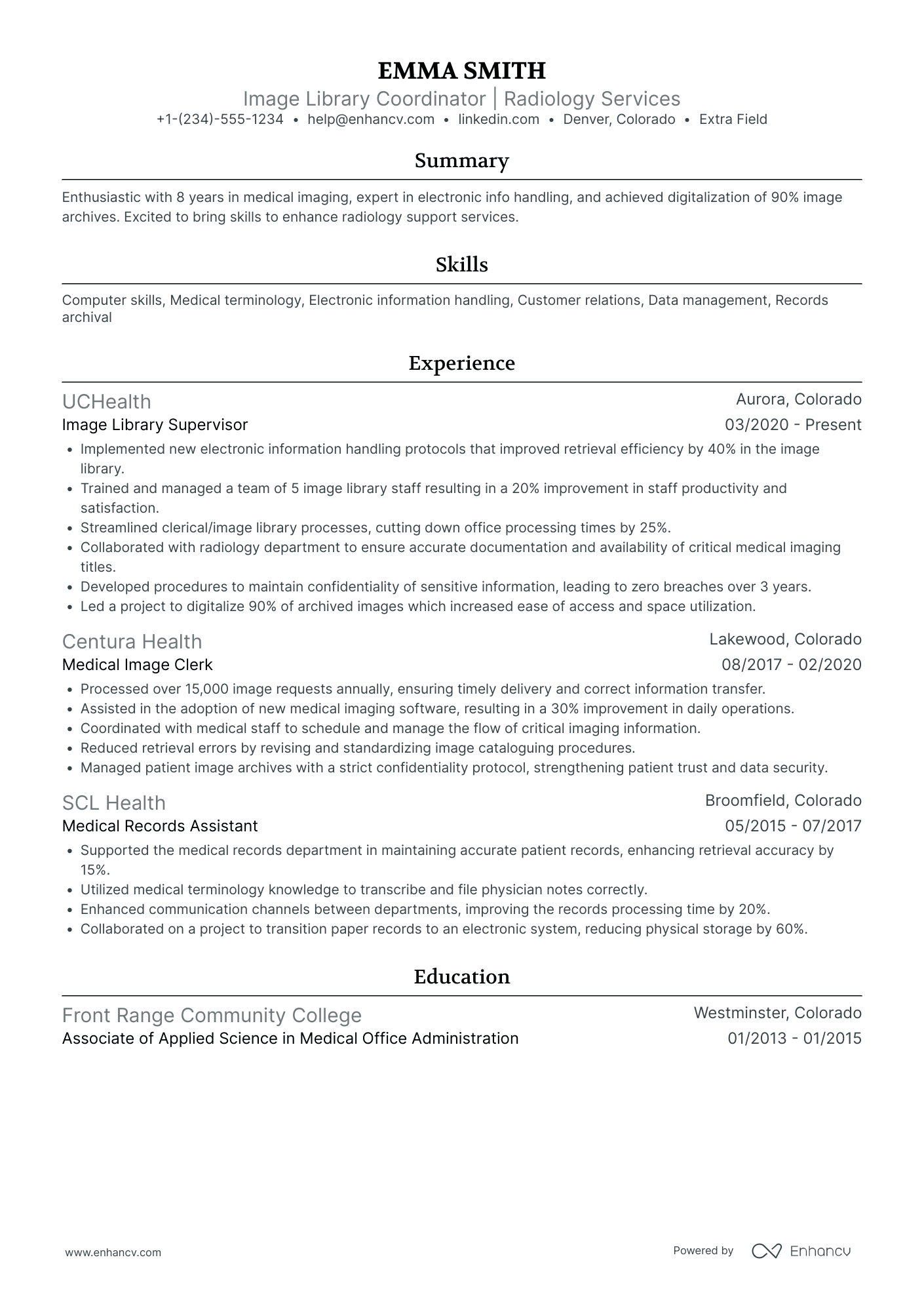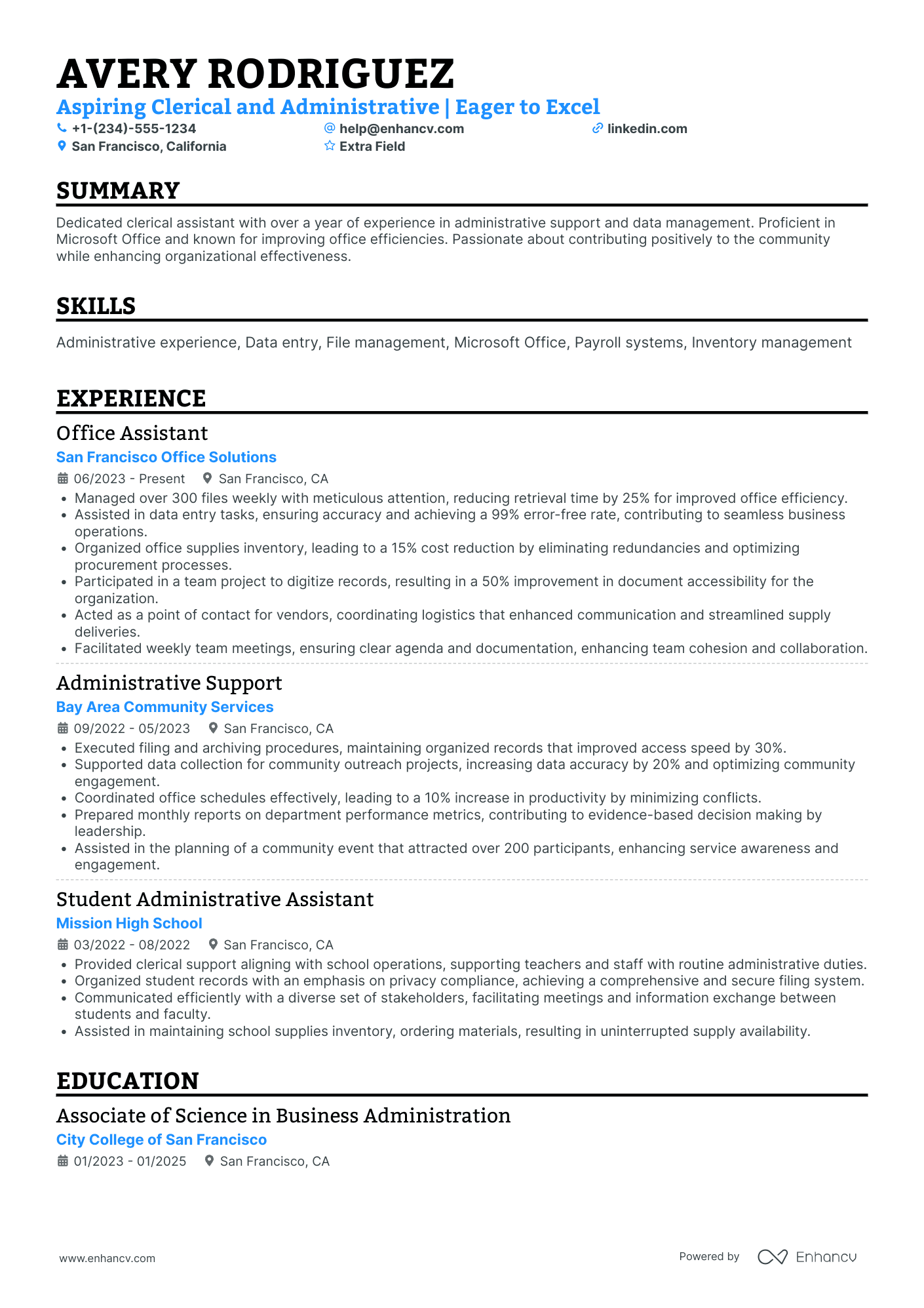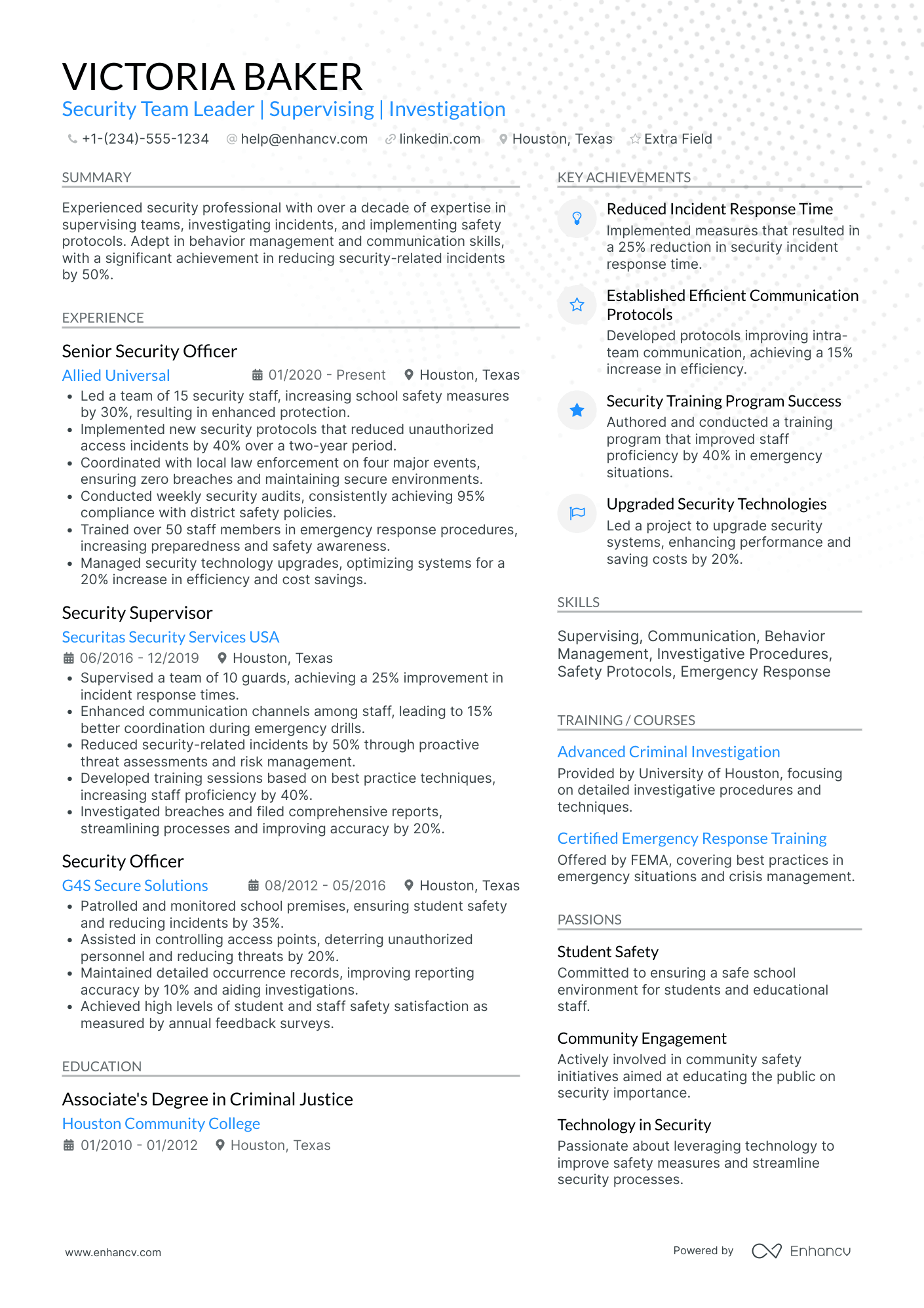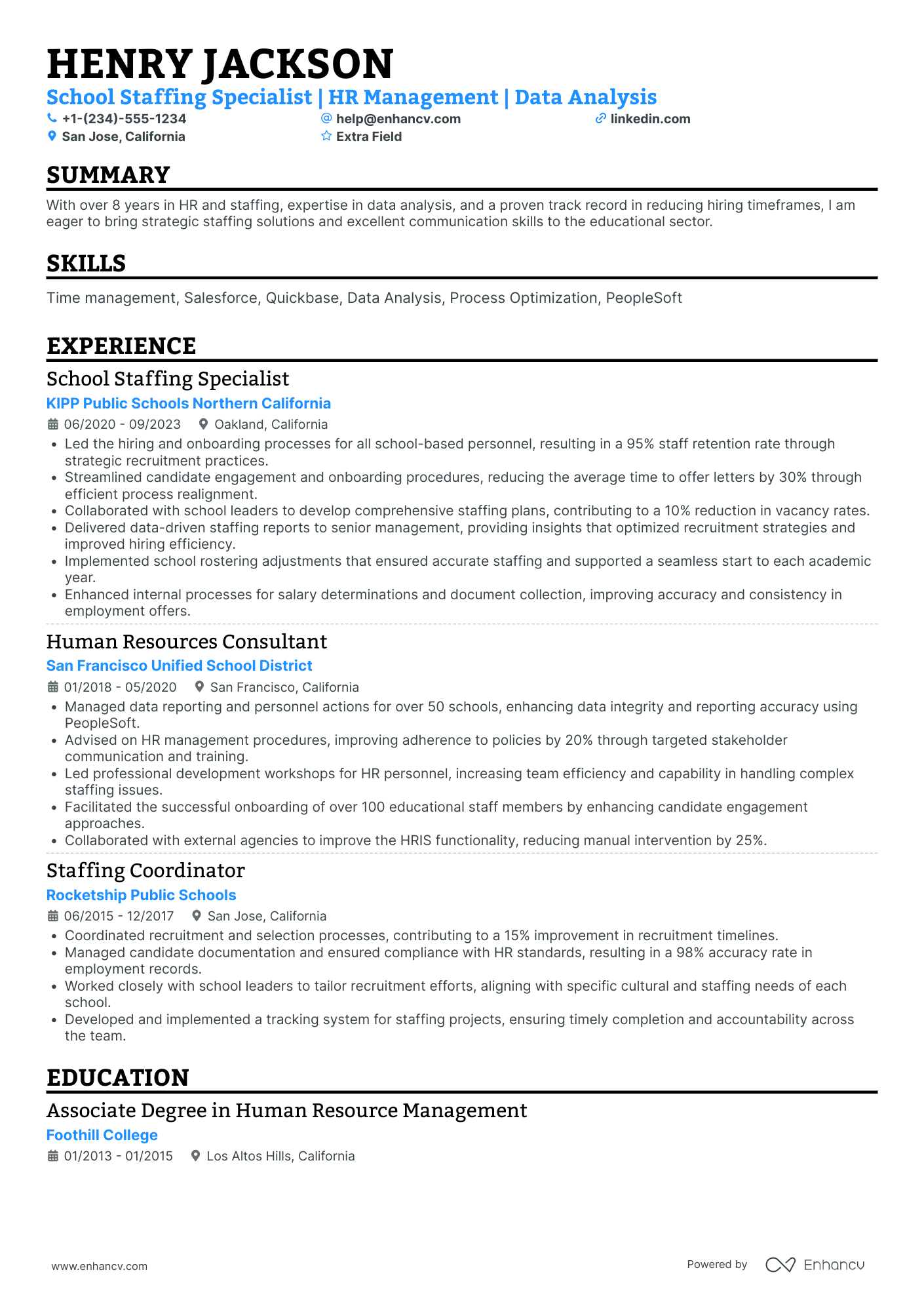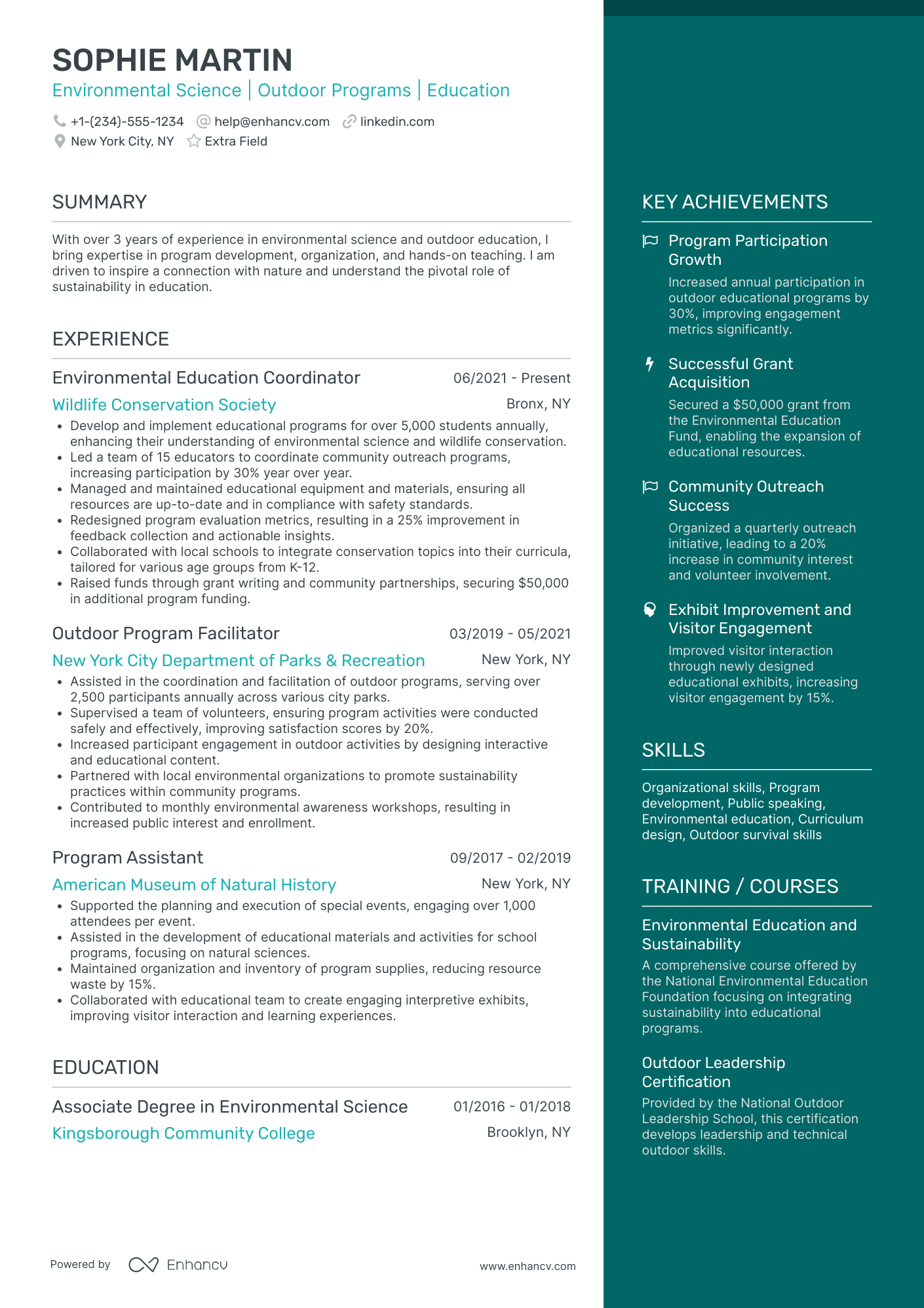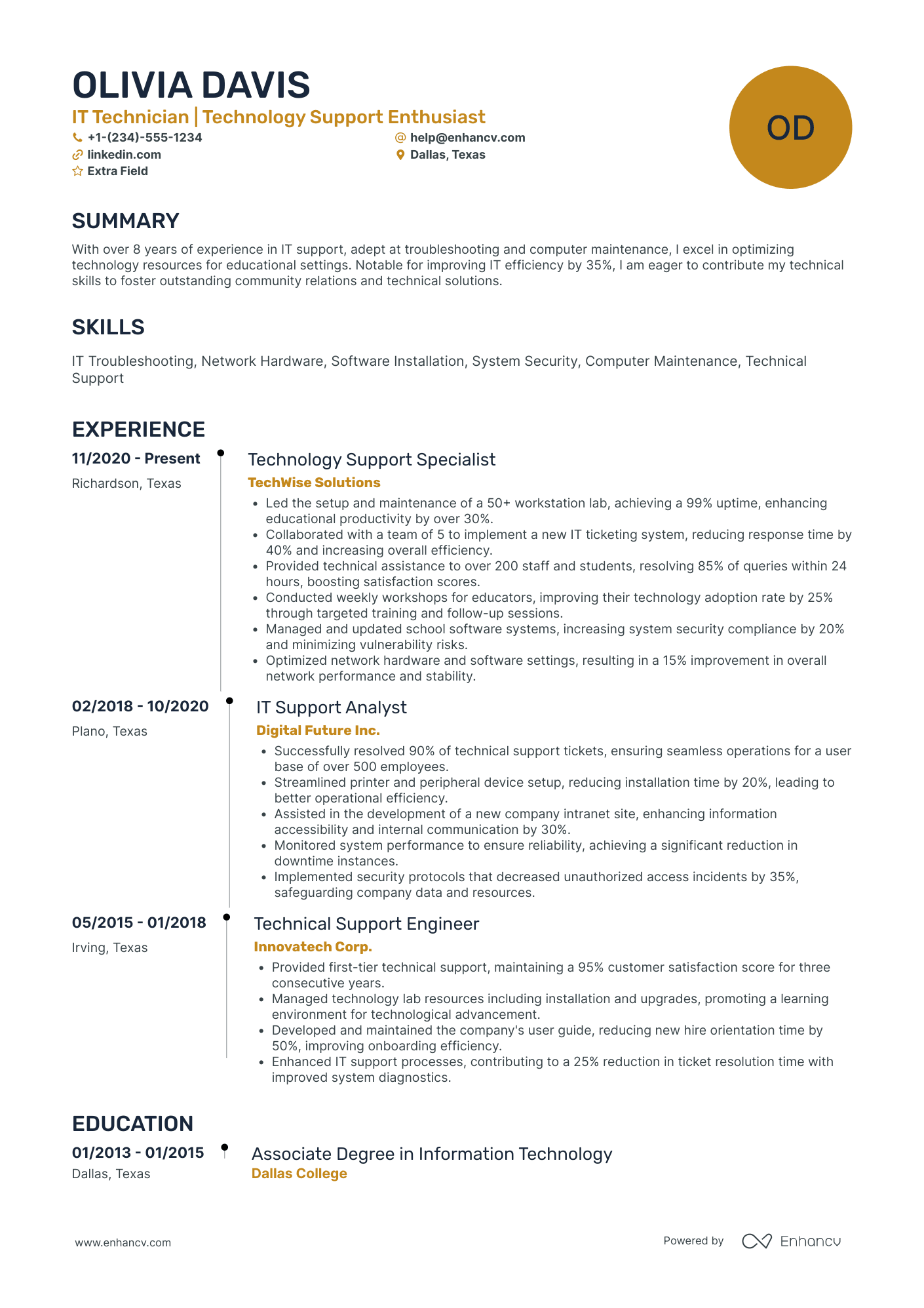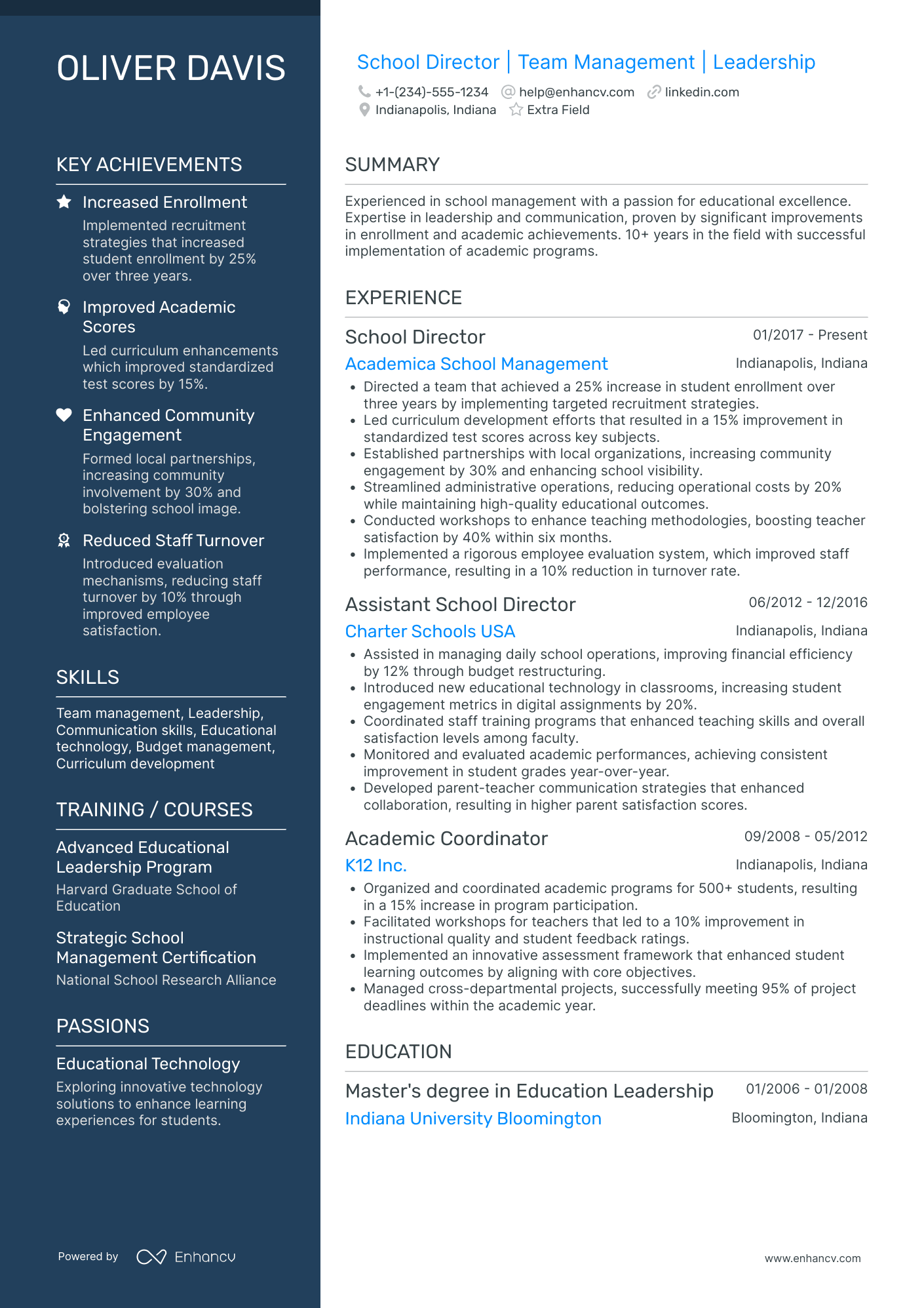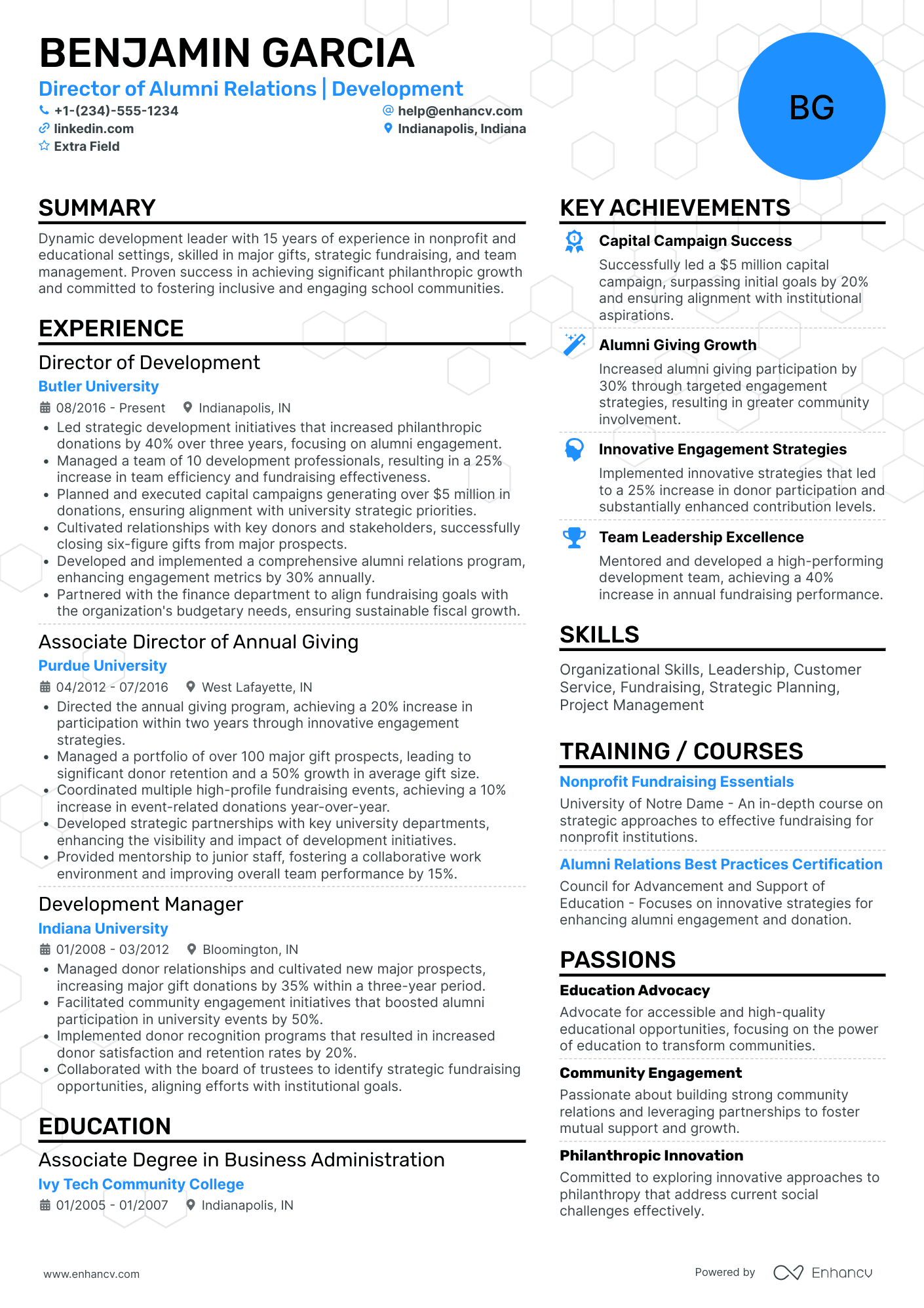One would think that being accepted to grad school would be easier than finding a job in the current job market. But the truth is, certain establishments seem almost impossible to enroll in. For example, Stanford University Graduate School of Business’s 2025 MBA course accepted only 8.42% of applicants.
This is why if you’re considering further academic training, you must effectively highlight your determination, goal-oriented attitude, and how the course will enhance your career prospects.
In our guide on how to create a carefully thought-out grad school resume, we’ll demonstrate:
- How to choose a resume layout that best suits your expertise and properly format it
- What recruiters are searching for in a perfect candidate and how to reflect it in your own resume
- Which grad school skills are most in demand and how to showcase them on your application
- How to foolproof your resume by making it compliant with ATS (Applicant Tracking System) tools
- How to frame your education and certification section so that it relates to your desired course
- What the hallmarks of a convincing resume objective or summary are.
- How to use our real grad school resume examples to inform your writing process.
Before we continue, take a look at other guides we have on related topics:
- Student Ambassador resume
- SLP grad school resume
- Academic resume
- College resume
- MBA application resume
- Grad school resume
How to format a grad school resume
grad school competition is tough. You must convince faculty committee members that pursuing a postgraduate degree isn’t a spontaneous decision on your part. That’s why when building your application, you must clearly and succinctly convey the scope of your knowledge, as well as your future career plans.
The first step towards crafting a stellar grad school resume is choosing an appropriate resume format. Below, we’ll review the three most popular layouts and the types of candidates they best represent.
Reverse-chronological resume format
If you’re a professional with extensive work experience in your particular academic field, select the reverse-chronological resume format. This template will perfectly showcase your research abilities and in-depth subject matter knowledge. Plus, the layout is preferred by admission officers because it’s easy to scan through and clearly demonstrates your academic career progression.
One of the format’s advantages is that you get to curate the experience section by picking which roles to add and bring emphasis to. However, keep in mind that oftentimes being overly selective or not arranging your experience section properly can emphasize existing career gaps. To avoid this, don’t forget to include extra details that explain the gaps in other sections of your resume, such as going on a sabbatical leave or being a stay-at-home parent.
Hybrid (combination) resume format
On the other hand, if you’ve managed to gain some hands-on professional experience before going back to school, then the hybrid resume format is your best option. The layout offers a fair overview of both your experience and expertise without placing a special emphasis on one over the other.
Some might argue that the lack of stress on a particular resume section is counterproductive. However, depending on the academic field, this can be a good way to demonstrate you have both the knowledge and practical experience to do the job — especially if you’re aiming for an entry-level position after you graduate. Remember to list any transferable skills or supplementary knowledge you have to offer.
Functional resume format
Finally, if you lack any practical professional history in your respective field, pick the functional resume format. This layout draws attention to your academic qualifications, professional training, and acquired skills. Make sure you frame your education section accordingly and list all your degrees and certificates in order of relevance.
If you do have some hands-on experience, such as pertinent internships, volunteering gigs, or just shadowing other professionals, add them to your resume.
Remember, resume layouts can vary by country – for example, a Canadian resume format could look different.
Run your grad school resume through our AI-powered resume checker to gain actionable insights on 16 essential points for free, as well as tips on how to improve your application.
Is your resume good enough?
Drop your resume here or choose a file. PDF & DOCX only. Max 2MB file size.
Further format writing tips
Once you choose an appropriate professional template, it’s time to work on design and formatting. Here are some tips and rules to take into consideration:
- Arrange your work history in reverse chronological order: Faculty committee members have a very limited time to go over individual applications. So, it’s recommended you place your most recent roles near the top of the resume to emphasize your current expertise level.
- Optimize your resume header to reflect your qualifications: Many dismiss the resume header as a simple personal information section. However, if you want to make your resume stand out, you must be more strategic during the writing process. So, apart from your name, address, and contact information, attach a link to your portfolio and list any industry-recognized credentials you have, such as CFA (Chartered Financial Analyst) or LPN (Licensed Practical Nurse).
- Ensure you build an ATS-friendly resume: Focus on a clear and simple resume layout to ensure readability by both ATS and recruiters. Make sure you integrate resume keywords from the job description naturally within your resume which will also impress recruiters.
- Select a simple design and resume font: Being in academia doesn’t mean your resume has to look like a research paper. Each field has its traditions and trends, so consider these when choosing a clean, stylish design. Ensure readability by selecting a serif or sans-serif font like Raleway or Rubik.
- Add more information about your expertise in the education section: For your application, it's recommended to include more details about your education. The faculty committee needs to assess how your current knowledge overlaps with the graduate program and evaluate the long-term benefits to your career.
- Create a single-page resume: While your grad school resume must outline all relevant work and life experiences, it’s important to note that this should be done in a very focused and concise way. If you want to elaborate further on any of the information you’ve added to your application, detail it in your grad school cover letter.
- Check submission requirements before saving: Unless stated otherwise, preserve the design and layout of your resume by saving it as a PDF file. Also, confirm that you’ve adhered to any document naming conventions listed in the ad.
Next, divide your grad school resume into sections. Remember to leave enough space for the following key segments:
The top sections on a grad school resume
- Personal information section: Provide recruiters with your basic contact details to help them reach you easily.
- Education history section: Showcase your academic qualifications as these are essential to demonstrate your readiness for advanced studies.
- Research experience section: Bring attention to your experience in conducting research to display your ability to contribute to scholarly discourse.
- Publications section: Highlight your research papers or scholarly articles you’ve published to demonstrate your contributions to your field.
- References section: Exhibit support from your respective community by listing the contacts of other field-recognized peers who willingly vouch for your competence and character.
Below you’ll find quintessential points you must cover in each of the segments you add to your application:
What recruiters want to see on your resume
- Strong academic performance: Your grades are a clear indicator of your academic abilities and dedication to your studies, which are critical for grad school.
- Relevant research experience: This shows that you’re familiar with research methodologies and have experience in critical analysis, which is essential for grad school.
- Published work: If you have any published work, it showcases your ability to conduct thorough research and contribute to your academic field.
- Clear career objectives: This shows that you have a clear direction for your future and that further education is a necessary step towards achieving those goals.
- Quality references: These can vouch for your hard work, dedication, and capabilities, further strengthening your application.
How to write your grad school resume experience
The experience section of your resume is where you provide a summary of relevant past roles, career achievements, and acquired skills, such as operating specific industry equipment and tools.
Regardless of your academic specialty and experience, faculty committees want to see your understanding of key industry organizations and trends. Avoid the "laundry list" approach; instead, highlight your achievements. This will demonstrate your skills and emphasize your ability to set and achieve goals.
Here’s how to structure your grad school resume experience entries:
- Provide the name of your previous employer and your job title: Some organizations have many subsidiaries and sister companies, which often operate under the same brand name. So, always make sure to state the organization’s full name and your job title, as they provide context about your professional development and range of skills.
- Summarize your employer’s business operations in one sentence: Speaking of listing a company’s legal name, make sure you outline its business operations and how your position was related.
- Add a link to the website of the organization: Link to the company’s website to let faculty members get a better understanding of your past employer's mission, goals, and overall performance.
- Cite the start and end date of your employment, as well as where you’re located: You don’t have to provide exact dates. Listing the month and year is more than enough. Also, even if you’re working remotely, do include the location of the branch you’re associated with.
- Recount your academic and career achievements as bullet points: Your experience entries should include between three and five bullet points that describe the scope of your knowledge and abilities. Remember to begin each bullet point with an action verb to emphasize the significance of your accomplishments.
- Build a targeted resume: Align your skills and achievements with the course requirements to showcase what makes you the perfect candidate to secure a spot in the postgraduate program. It’ll also demonstrate your professional development within your respective field.
With all this in mind, have a look at the following example:
- •Fixed and patched data visualization features.
- •Employed Python, Java, and Liquibase in day-to-day tasks.
- •Reduced error margins by 4.5% by developing custom features.
The main issue that sticks out is the mismatch between the time the applicant spent as an intern and the “achievements” listed. A month isn’t enough to completely familiarize yourself with a complex database project and its documentation.
In addition, the bullet points don’t actually showcase what the candidate is capable of achieving. One mentions a list of tools, but not how they’ve been applied in practice. By contrast, the other two bullet points are vague because they don’t offer enough information for the accomplishments to really stand out.
A more enhanced version of the above example would be:
- •Assisted in fixing and patching 10+ data visualization features to address client concerns, thus increasing customer satisfaction by 35%.
- •Boosted data aggregation speed with Python and Liquibase by 10 seconds, which resulted in a 60% raise in positive feedback from clients, as well as a 20% raise in new clients.
- •Developed a custom feature with Java and R to audit and clean aggregated information for a client conducting business with military organizations, thus reducing error margin by 4.5%.
This entry will impress admissions officers because the candidate clearly states which programming languages they’re proficient in. By sharing specific measurable data, the applicant has also explained how their work has impacted the company’s business relationships.
How to quantify the impact on your resume
While we’re on the topic of data, let’s discuss why numbers in your resume matter.
Including measurable data in your resume is important as it provides much-needed context to properly describe your work performance. Without numbers, achievements may seem less significant. Always add data to support your accomplishments effectively wherever possible.
Here are some ways to reference numbers on your grad school resume:
- Include your GPA: This quantifiable data demonstrates academic excellence and shows commitment to your studies.
- Mention the scholarships or grants received: It not only highlights achievement but also shows your financial management skills.
- List quantifiable results of any organizational initiatives: This shows your ability to create an impact in a business context.
- Exceptional test scores: If you've taken business-related exams, the results can prove your proficiency in business concepts.
- Number of internships completed: This shows your proactive efforts to gain real-world business experience, which is important to recruiters.
- Meticulously detail your involvement in business projects: In addition to showcasing your hands-on experience, this highlights your business acumen and strategic planning skills.
- Specify budgets you’ve managed: This gives a sense of your financial management skills, crucial in business roles.
- Quantify your leadership roles: Detailing the number of individuals you led or projects you managed highlights your leadership and team management skills.
The work you do early will help you have a really polished piece of work to put forward. We get a ton of applications every year. The ones that are polished get a better review than others.
Bill Mahoney, Associate Dean for Student and Postdoctoral Affairs at the University of Washington’s graduate school
How do I write a grad school resume with no experience?
If you’re applying directly after completing your undergraduate course, building a grad school resume without work experience can be difficult.
But don’t lose hope yet!
Corporate experience isn't the only way to demonstrate your expertise. Focus your resume on scholarly accomplishments and relevant knowledge. Admissions officers look for excellent project management skills, financial responsibility, and the ability to fully benefit from the program.
After all, higher education institutions are very competitive when it comes to research, innovation, and development. Consequently, their reputation is on the line.
So, before you start crafting your resume, research the respective institution’s faculty to determine its:
- Current academic focus and mission
- Ongoing projects, including funding and sponsors.
- Missed research opportunities.
Then, align your expertise and skills with the findings of your research. Here are some ideas on what type of experience you can add:
- Internships: Even if most of what you’ve done during your internship is shadowing other professionals, adding such experience to your resume demonstrates you have a realistic view of current industry issues and trends.
- Volunteering on relevant projects: Based on your field of choice, volunteering can be a good way to showcase your dedication to your profession.
- Cross-institutional programs and year abroad experience: These underscore your ability to work with diverse teams and handle complex projects that often have large budgets and strict time constrictions.
- Additional training and certifications: Detail qualifications you’ve acquired outside formal education. This type of training won’t only stress your active involvement with your respective industry but also point to the type of professional specialization you’re seeking.
Also, hold on to your strongest pieces of writing and share them with a professor you might ask for a recommendation letter. Tell the professor you’d like to use this piece of writing as part of your grad school application and ask them what you should work on to make it better. Faculty can give great advice.
Celia Marshik, Dean of the graduate school at Stony Brook University—SUNY
How to list your hard skills and soft skills on your resume
Another small and frequently overlooked segment on a grad school resume is the skills section. Many candidates who don’t have much prior practical experience tend to overfill their skills section in an attempt to match all of the course requirements.
However, this approach is both obvious and ineffective. The main reason for this is that in most cases the crammed skills section doesn’t match the experience and expertise described in the rest of the resume. So, to avoid falling into this trap, let’s review how skills are usually categorized.
Hard vs soft skills
Irrespective of the industry or the academic field, there are generally two types of competencies - technical and social skills.
The first type, also known as hard skills, covers field-specific abilities, such as business principles, understanding of data science algorithms, or operating production equipment. What you add to your grad school resume will vary based on which abilities are considered as core skills within your field.
Conversely, the second represents the candidate’s level of emotional intelligence. That’s why they are also called soft skills. These include skills, such as empathy, problem-solving, and leadership abilities.
As you can see, you can add many skills and overcrowd the section as a result. That’s why you must apply a little strategy when building your resume. To get noticed by the admissions office, you have to:
- Review the graduate program requirements
- Go over your resume to verify which skills you’ve already covered in other segments, such as the experience and education sections
- Make a note of the abilities you haven’t covered yet.
- Add no more than 10 competencies.
Faculty committee members prefer candidates with a well-rounded profile as being a graduate student means you must have a strong subject matter foundation, and the social skills to collaborate with peers and present research insights.
PRO TIP
Many PhD students use ImaginePhD and myIDP to match their skills to a suitable career path. However, if you have plenty of practical experience, but don’t know how to relate your work history to the course requirements, you can use the tools inversely.
Below you’ll find further suggestions and ideas on skills you can add to your resume:
Best hard skills for your grad school resume
- Research analysis
- Data interpretation
- Statistical analysis
- Project management
- Data visualization
- Machine learning
- Academic writing
- Python
- R programming
- SQL
- SPSS
- Experimental design
- Qualitative research methods
- Biostatistics
- SAS
- Tableau
- MATLAB
- Lab techniques
- Public speaking
- Grant writing
Best soft skills for your grad school resume
- Communication
- Critical thinking
- Time management
- Problem-solving
- Teamwork
- Adaptability
- Leadership
- Motivation
- Conflict resolution
- Empathy
- Patience
- Emotional intelligence
- Active listening
- Negotiation
- Interpersonal skills
- Creativity
- Decision making
- Positive attitude
- Self-discipline
- Cultural sensitivity
Next, we’ll look at what makes an excellent education section and how you can build yours to stand out!
How to list your certifications and education on your resume
Taking into account the purpose of the application, describing your academic background in detail is pivotal. Oftentimes university programs overlap, however, the more you delve into specializing in a certain field, the more the courses will differ. As such, the admissions office must verify that you have the necessary foundation to enroll in the program.
Formal education
First, we’ll take a look at how to properly frame your education section:
- State the name of your degree and the issuing institution.
- Provide the start and end date of your studies by listing the month and year. If you’re yet to complete your degree, cite the date you expect to graduate.
- Indicate your GPA, if it’s above 3.5 to demonstrate your dedication to your field and your great academic skills.
- Mention one or two pieces of coursework that directly relate to the specialization you wish to pursue.
- Reference relevant majors and minors that align with the grad course’s subject matter.
- Disclose any academic recognition, such as being listed on the Dean’s list or graduating cum laude.
Use the following example as a reference when building your education section:
- •Published a paper on Reviewing Predictive Modeling in Healthcare: Data Mining, Patient Privacy, and Ethics in World Journal of Advanced Research and Reviews.
- •Majored in Database Management, Predictive Modelling, and Data Mining Ethics.
Depending on your field of choice, you may need to provide further proof of training as some undergraduate courses provide only a very limited foundational knowledge on which students are encouraged to build on their own.
Certificates
By showcasing your certifications on your resume, admission office members will get a better idea of what your particular academic interest is. In addition, it’ll help them to determine whether the offered course is a good fit for the career plans you’ve outlined in your resume.
All you have to do to list your certificates is:
- Cite the qualifications you’ve obtained
- Name the accrediting institution.
- State the date you acquired the certificate and the expiration date if applicable..
Like so:
Below you’ll find the current most popular certifications among grad school students.
Best certifications for your grad school resume
How to write your grad school resume summary or objective
The final segment for a grad school application is the resume profile. This is a short paragraph underneath the resume header that highlights your core skills and top career achievements.
There are two types of profiles depending on the amount of practical experience you have in the respective industry or academic field. They are:
- Resume objective: This type is best used by recent college grads and career changers. It aims to align the candidate’s current skill set and accomplishments with the institution’s mission and ongoing projects. Applicants must state what they seek to gain from the course and how they plan to progress further in their careers.
- Resume summary: By contrast, the summary is more appropriate for tenured professionals who seek to expand their expertise by pursuing an additional academic specialization. Their profile focuses on explaining how the offered course will benefit their career and how they’ll apply the knowledge after completing the program. Candidates should emphasize one or two pertinent career achievements, as well as the abilities they want to add to their current skill set.
Let’s illustrate with a few examples.
Have a look at the poor attempt below:
This resume objective won’t draw the attention of faculty committee members because they don’t mention any significant accomplishments after a year of being a Data Science Intern. It also doesn’t explain how the listed skills have been applied in practice.
Plus, the candidate uses first-person pronouns which may make them look conceited and egocentric. Instead, the applicant should omit the pronouns and use a first-person narrative style to make the paragraph easier to read.
To illustrate, consider the following grad school resume objective:
Now, have a look at the following resume summary. Do you think the candidate will get noticed for the right reasons?
In this case, the grad school graduate is a tenured specialist. However, nothing in the resume profile supports their claims, apart from the names of notable companies within the industry. Moreover, the applicant mentions a few of their hard skills, but none are linked to pertinent career accomplishments.
Last but not least, the paragraph includes several abbreviations. Given that the application will be reviewed by admission officers responsible for managing hundreds of courses, they may not be familiar with every single qualification. That’s why you should write out the full name of your credentials.
Here’s an enhanced version of the grad school resume summary from above:
Optimize your resume summary and objective for ATS
Drop your resume here or choose a file.
PDF & DOCX only. Max 2MB file size.
Additional sections for a grad school resume
If you feel your application isn’t as comprehensive as it could be, you can always supplement your grad school resume with extra sections. But remember to do so only if you have sufficient space to properly present the information without overcrowding your application.
These should cover information that doesn’t necessarily fit the mold of the other sections but offers a better overview of your skills and expertise.
What extra segments you add will depend on your experience. Some of them include:
- Research papers and publications: If you’ve done extensive research on a course-relevant topic and have authored a few papers, build a short bibliography of your work with links to each of your projects. These will demonstrate your academic focus and the depth of your subject matter expertise.
- Memberships in relevant associations and research institutions: Showcasing active involvement with respective academic and corporate communities emphasizes your knowledge of current trends, as well as your ability to network.
- Contributions to open source projects: If you’re striving for a placement in Software Engineering or Data Science, this can underscore your ability to write documentation, support complex projects, and work cross-functionally.
- Language skills: These are crucial in both academic and corporate settings—especially if you’re pursuing a social sciences or a language-related career.
Key takeaways
In summary, to build an effective and outstanding grad school resume, you must:
- Choose a suitable resume format that best reflects your expertise and skill set.
- Remember to link your portfolio in the resume header.
- Be selective about past roles you recount and arrange them in reverse chronological order.
- Quantify your achievements to highlight the significance of your contributions to your respective academic field.
- Place an emphasis on your education and certification section by providing a more detailed overview of your research, publications, and presentations.
- Craft a strong resume profile that aligns with the institution’s mission and ongoing projects.
- Limit your application to a single page and reserve any additional information for your grad school cover letter.
Grad School resume examples
By Role
